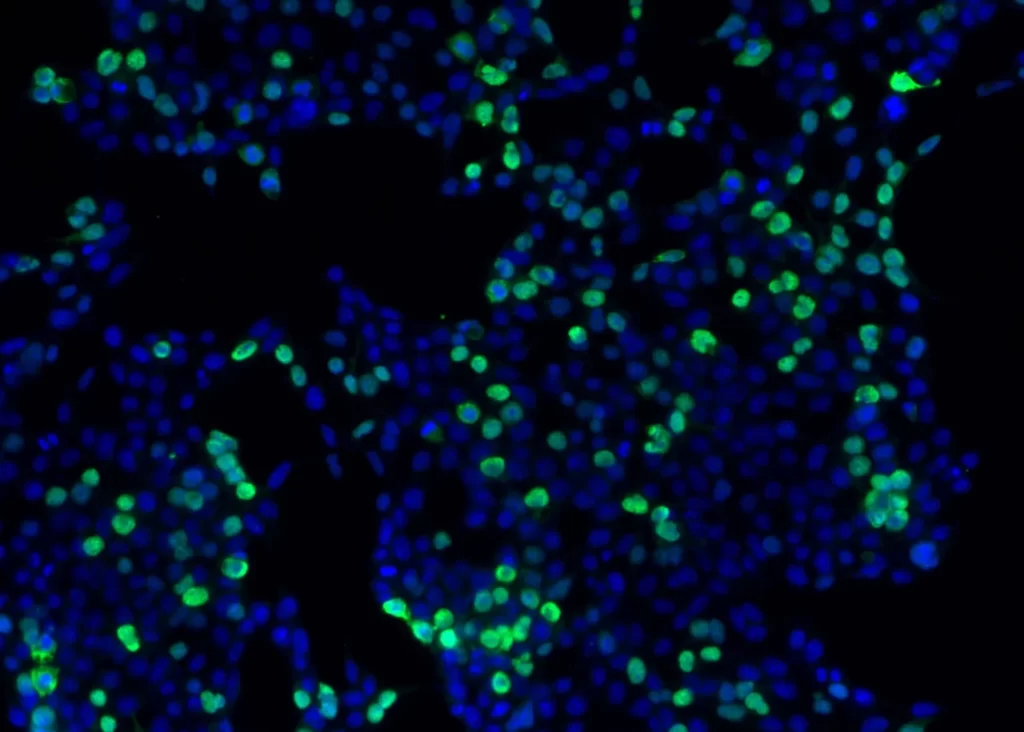
The FLAG peptide, also known as DYKDDDDK, is a short, hydrophilic, and highly charged peptide sequence. It is extensively utilized in the field of molecular biology for the detection and purification of proteins. Delve into the significance of the FLAG peptide, its applications, and its advantages in scientific research.
Key Takeaways
- FLAG peptide is a widely used epitope tag in molecular biology.
- It facilitates protein purification and detection.
- The DYKDDDDK sequence is highly specific and efficient.
Structure and Properties of FLAG Peptide
Amino Acid Sequence
The FLAG peptide consists of eight amino acids: Asp-Tyr-Lys-Asp-Asp-Asp-Asp-Lys. This sequence is designed to be highly specific and efficient in binding to antibodies, making it an ideal choice for various biochemical applications.
Hydrophilicity and Charge
The peptide is highly hydrophilic and carries a significant negative charge due to the presence of multiple aspartic acid residues. These properties enhance its solubility and interaction with other molecules, facilitating its use in different experimental conditions.
Applications of FLAG Peptide
Protein Purification
One of the primary applications of the FLAG peptide is in protein purification. By fusing the FLAG tag to a target protein, researchers can easily isolate and purify the protein using affinity chromatography techniques. The FLAG tag binds specifically to anti-FLAG antibodies, allowing for efficient separation from other cellular components.
Protein Detection
The FLAG peptide is also widely used for protein detection in various assays, including Western blotting, immunoprecipitation, and immunofluorescence. The high specificity of the FLAG tag ensures accurate detection of the target protein, even in complex mixtures.
Advantages of Using FLAG Peptide
High Specificity
The FLAG peptide’s sequence is highly specific, reducing the likelihood of cross-reactivity with other proteins. This specificity is crucial for obtaining accurate and reliable results in both purification and detection assays.
Versatility
The FLAG tag can be used in a variety of experimental setups, making it a versatile tool in molecular biology. Its compatibility with different techniques and conditions enhances its utility in diverse research applications.
Ease of Use
The FLAG peptide is easy to use and can be readily incorporated into experimental protocols. Its well-characterized properties and availability of high-quality antibodies further simplify its application in research.
Find more peptide synthesis here.
The FLAG Peptide

Frequently Asked Questions
What is the FLAG peptide sequence?
- The FLAG peptide sequence is Asp-Tyr-Lys-Asp-Asp-Asp-Asp-Lys (DYKDDDDK).
How does the FLAG tag facilitate protein purification?
- The FLAG tag binds specifically to anti-FLAG antibodies, allowing for efficient isolation of the tagged protein using affinity chromatography techniques.
Can the FLAG peptide be used in different experimental conditions?
- Yes, the FLAG peptide is highly versatile and can be used in various experimental setups, including different buffers and conditions.
What are the advantages of using the FLAG peptide over other tags?
- The FLAG peptide offers high specificity, ease of use, and compatibility with multiple detection and purification techniques, making it a preferred choice in molecular biology research.
